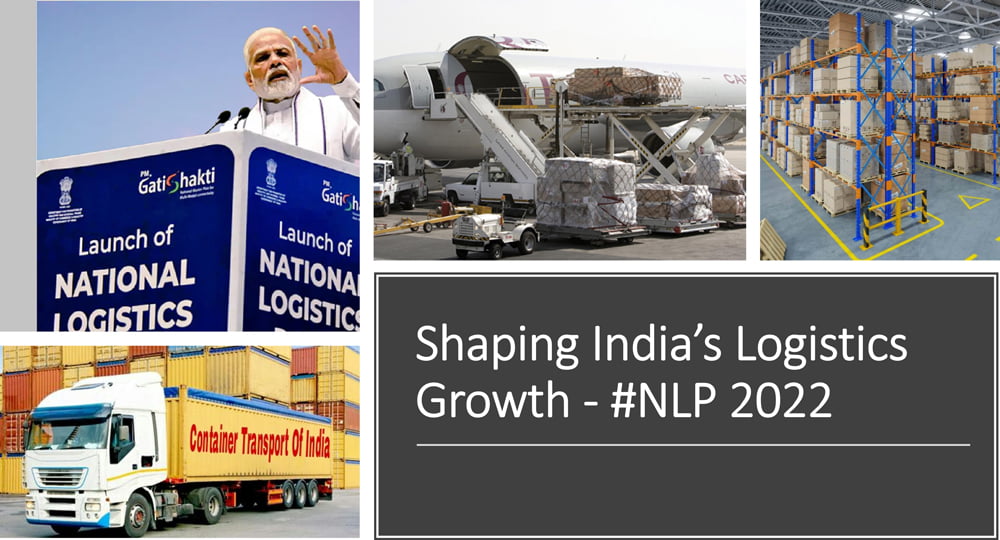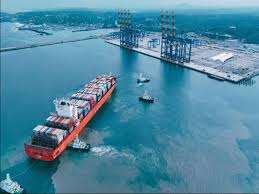Author: Pratima Chopra
With the recent launch of the National Logistics Policy 2022 by the Government of India, that aims to achieve quick last mile delivery to end transportation challenges across the country, Logistician’s have received a ray of hope in better planning, coordination, storage and movement of resources in a much improved & effective manner.
Logistics is the backbone of Indian economy and with the promotion of PM’s Gati Shakti National Master Plan, this transformative approach for improving efficiency in India’s logistics plan, reduction in logistics cost and an improved infrastructure will go a long way to ensure seamless movement of resources that includes first & last mile connectivity.
The National Logistics Policy 2022 comes with a vision of “developing tech enabled integrated, cost efficient & sustainable logistics eco system in the country”. The policy targets to improve Logistics Performance Index Ranking of India to be among top 25 countries by 2030.
Let us look at the challenges that India’s logistics companies are currently facing and how this policy will benefit them:
- Statistics show that 60% cargo is moved by road and remaining through other modes of rail and air. Movement of goods done by road transportation is highly inefficient because of poor road infrastructure, multiple check points, & traffic congestion.
- The other challenge comes for Port Sectors due to high turnaround times, delay in cargo evacuation etc. Coastal shipping in India gets hampered due to weak land side & port facilities.
- Furthermore, automation in India particularly for Logistics segment is still at an embryonic stage. In an era of Artificial Intelligence, Machine Learning, Robotic Processes, the sector is still struggling to even get the Warehouse Management Systems in B&C class companies.
- The poor infrastructure of warehouses and their isolated locations, low quality ground force is one of the major concerns of this industry.
- Severe complex compliance regulations imposed by state governments & other authorities is another trouble for logistics companies.

Let us read through how the National Logistics Policy 2022 will benefit the sector:
The policy will be implemented through a Comprehensive Logistics Action Plan (CLAP) with some key action areas such as:
- Developing Integrated Digital Logistics System to link multiple data sources & develop cross sectoral use case for logistics stakeholders.
- Standardising assets & benchmarking service quality standards by minimising handling risks, process optimisation and improvement in ease of doing business.
- Developing Human Resource Strategy, line ministries to develop action plans to address skill development related challenges.
- Addressing infrastructure & procedural gaps in India’s EXIM connectivity; creating efficient & reliable logistics network with seamless cross border trade handling.
- Facilitating Logistics Parks (multi-modal), Air Freight Stations, Inland Container Depots, Container Freight Stations, Cargo Terminals, inter-modal transfers etc. to get better supply chain connectivity.
- Create a network of logistics parks by mapping them on the PM Gati Shakti National Master Plan, for enhanced visibility, improved logistics efficiency, optimum utilisation and connectivity.
A team of experts from private industry, prominent Logisticians, Ministry of Commerce and Industry, Government of India, shall collaborate together to improve existing standards match with international best practices and standards under the CLAP.
In warehousing, India warehousing market was valued USD14.65 billion in 2019 and is forecasted to grow at a CAGR of 9.82% to reach USD19.53 billion by 2025 by opening up the sector to private investments ensuring the relevance of the benefit to be gained from private players contribution. (Source: Ministry of Commerce & Industry).
In this modern era where every function is moving from humanoids to robots, the logistics companies will have to begin working on such tech aspects to gain productivity in warehousing sector. The logistics cost in India is quite high as compared to other developing economies. With the implementation of National Logistics Policy, logistics costs will be targeted to cut by half to be near global benchmarks by 2030. The current cost is 16% of GDP.
In future, India’s warehousing industry may witness higher demand as manufacturers shift their focus away from China to towards other Asian countries, including India itself.
However, one key aspect would be required that warehouses must reduce the amount of human contact involved in handling materials.
The National Logistics Policy 2022 targets to ensure that logistical issues are minimised, exports grow manifold, automation & digitalisation is instigated and small industries and the people working in them, benefit significantly. What do you think on how this policy will benefit India’s Logistics Sector, do let us know by leaving your comments in box below.





